Spring has always been the traditional time to plant flowers and roses. But fall is also a great time to put plants into the ground and give them a head start for the next year.
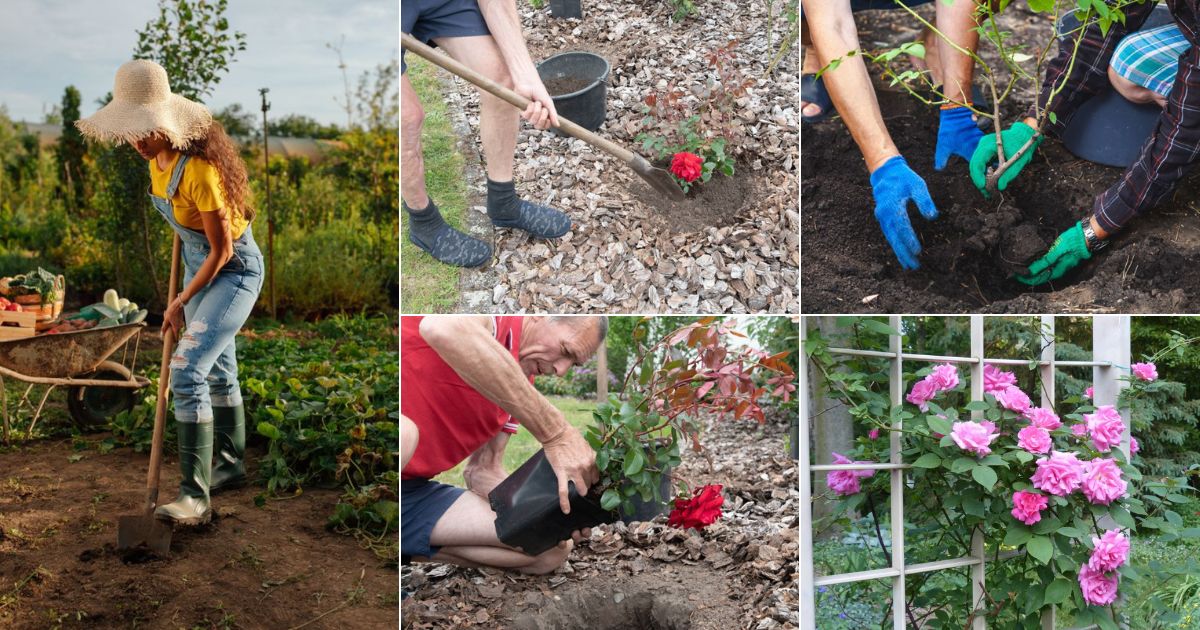
Jump to:
- 4 Good Reasons to Plant Roses in the Fall
- Buying Roses in the Fall
- How Do You Plant Roses in the Fall?
- Choose the Best Location for Your Rose
- Dig a Hole Worthy of the Rose
- About Bud Unions and Rootstocks
- Setting the Rootball in the Ground
- A Trick with the Shovel
- Put in the Soil and Make a Saucer
- Water! Water!! Water!!!
- You’re Done! Now to Maintain Your Fall-Planted Rose
4 Good Reasons to Plant Roses in the Fall
Why should you plant roses in the early fall? Let me count the ways.
- Cooler temps in fall make it easier for the rose to get established. Instead of being stressed by the summer heat as they’re getting started, the rose has a little more time to grow out its roots.
- Fall rains keep the roses hydrated. They don’t lose as much moisture to the sun as they do in summer.
- Roses have three seasons to get established before summer starts, instead of one. Even during winter, their roots are growing, though very slowly. With a good layer of mulch, the rose should be protected against winter’s freezes.
- You get a head start on spring. When spring rolls around again, and everything needs to be planted and cared for all at once, your rose is already in the ground and growing, and will be ready to flower for you next spring or summer.
Read on to find out why I’m such a fan of fall planting and learn how to give a rose the best start possible by planting it right.
Buying Roses in the Fall
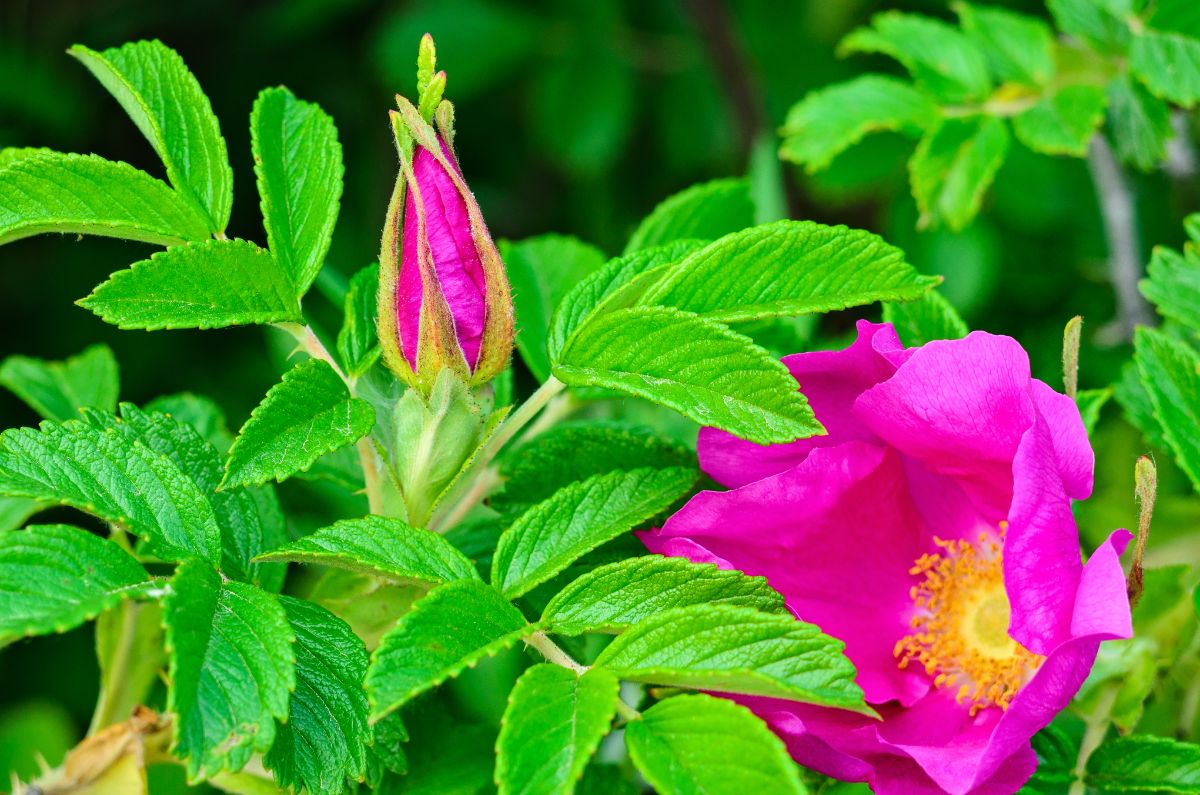
I love buying roses in the fall. Nurserymen like to sell roses, trees, and shrubs at a discounted price in the fall so they don't have to store them over the winter. You won’t get as wide a selection as you did in spring, but you can still find some great roses there. And I’m always a fan of a good sale.
Fall roses might look a little bedraggled, but if the rose has green, healthy stems and leaves, it will be fine. Make sure it’s growing in plenty of soil and the soil didn't get washed out of the pot over the months that they've been watering it.
How Do You Plant Roses in the Fall?
Once you’ve got your roses, line up what you need for planting:
- Your roses (naturally)
- A good, sharp shovel
- Organic fertilizers
- A bucket of compost
- Mulch
- A gardening knife or clippers
- Water hose
- A water bottle for you (so you can stay hydrated)
Choose the Best Location for Your Rose
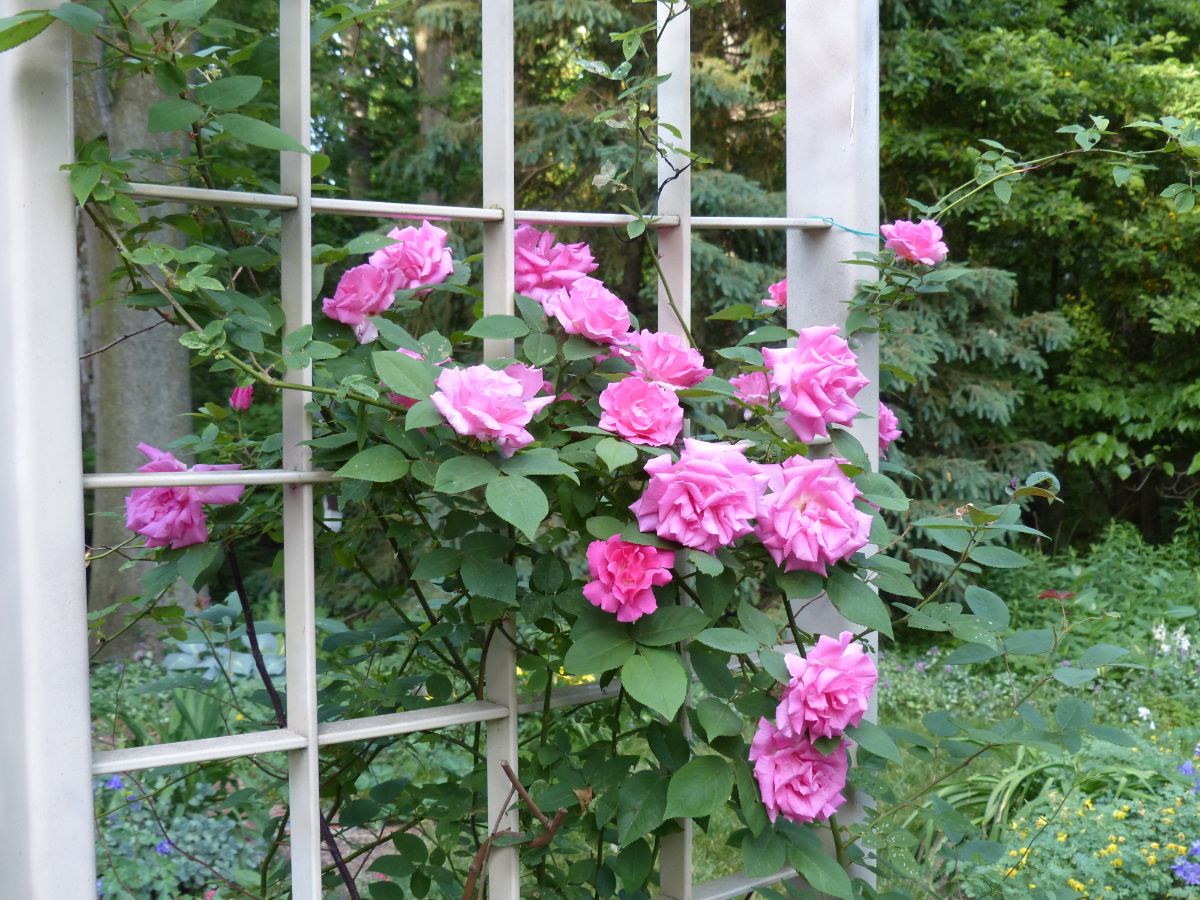
First, choose a place that gets full sun for six to eight hours a day. There are a few roses that can take some shade, like Zéphirine Drouhin, a thornless rose.
However, the majority of roses prefer full sun, and it would be wise to stick to that.
Also, try to choose a place that has not had a rose growing in it before. Diseases can be passed from one rose to another through the soil or through old roots left behind.
However, if you're stuck with that location, you can dig out that soil and replace it with fresh, new soil.
Dig a Hole Worthy of the Rose
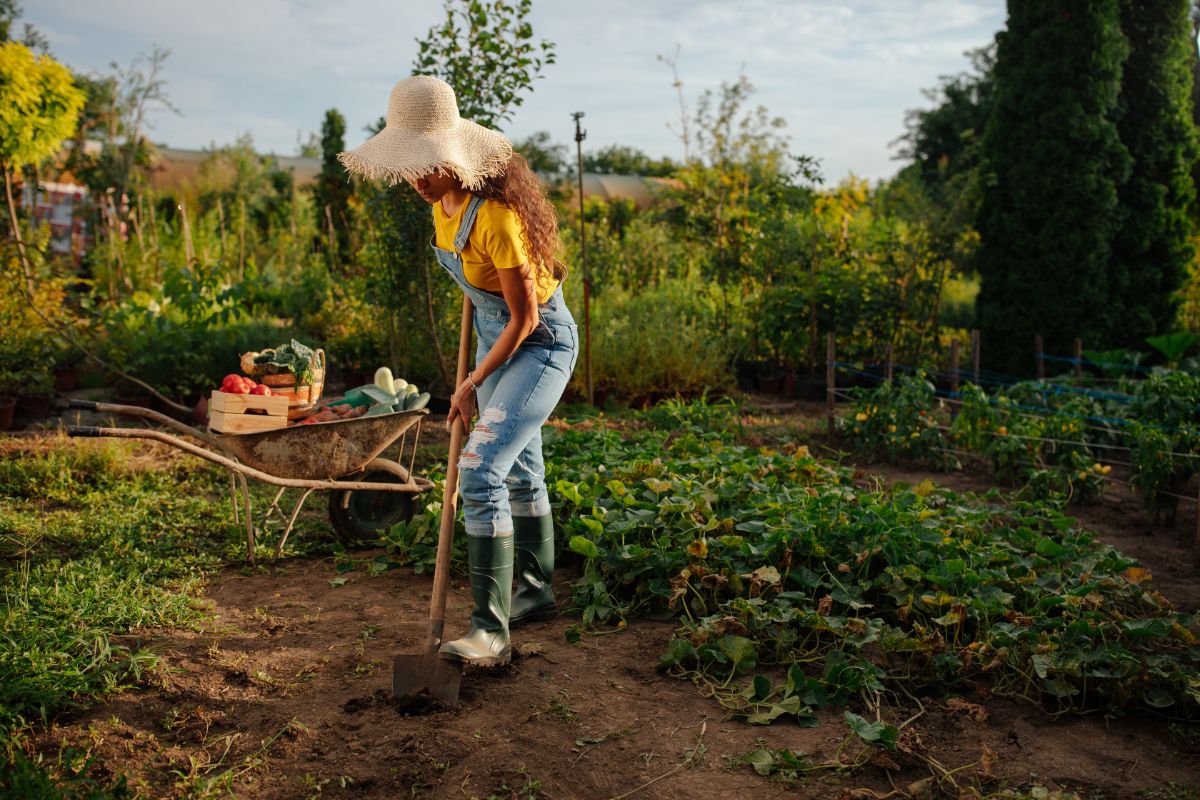
A rose should have a $10 hole – though with inflation these days, better make it a $100 hole.
Dig a hole that's about two feet around and a little bit deeper than the root ball of the rose you're planting. This gives the rose plenty of room to grow and be treated like the "queen of the flowers” as she deserves. It will also give your rose lots of minerals and nutrients because your rose is a hungry gal.
You’ll need to have good soil mixed with organic soil amendments like bone meal and blood meal. Get a cup of each to add to the soil. Roses love compost mixed into the soil, so be sure to add that, too. Compost should make up only about 20 to 30% of the soil mix.
Don't sweat about trying to get the perfect fertilizer. When I planted roses at the Krug Park rose garden, I just used whatever I happened to have in the truck that day. Some roses were planted with bone meal; some had blood meal or greensand. I got the compost from the huge compost pile they had at the landfill. If you have a cup of soil amendment and a five-gallon bucket of compost, you should be good.
However, if you intend to grow prize roses and you’d prefer a soil mix that’s better for roses than what some overworked horticulturist in the field was scraping together, here’s a good recipe:
Soil Mix for Planting Roses
Combine:
- ¼ sand,
- ¼ loamy soil,
- ¼ organic material such as composted manure, and
- ¼ crushed pine bark
Mix this in with whatever organic fertilizer suits you. Do not use pine shavings because those burn the roots.
You can put this into a raised bed for excellent drainage or into the planting hole.

After digging the hole, pour in the compost and soil amendment(s), add some of the old soil, then mix them together with the shovel. Jab the shovel into the ground below and on the sides to give the rose places to continue growing her roots if she wants. Then dig out an area in the middle to put the rose.
But how deeply should the rose be planted? Well, it depends on whether your rose has a bud union on it and what side of the bud union debate you’re on.
About Bud Unions and Rootstocks
A number of rose varieties are grafted onto a vigorous rootstock rose. It’s a faster way to propagate roses, and some roses grown on rootstocks often have bigger blossoms and are healthier than when they grow on their own roots.
The place where they’re grafted is called the bud union, which looks like a swollen spot on the neck of the rose.
There’s a debate between the big players in the rose world on whether the bud union should be planted above ground, at soil level, or one inch below the ground.
Some state that the bud union should be planted above ground because the rootstock will send out suckers if planted underground. Some say that the rose should be planted below ground to keep the rose from rocking in high winds and keep the rose from dying back to the rootstock in bitterly cold winters.
Due to this confusion, I prefer to settle on a compromise where the bud union is just above ground level – but you mulch the heck out of it once the temperatures start dropping.
Setting the Rootball in the Ground
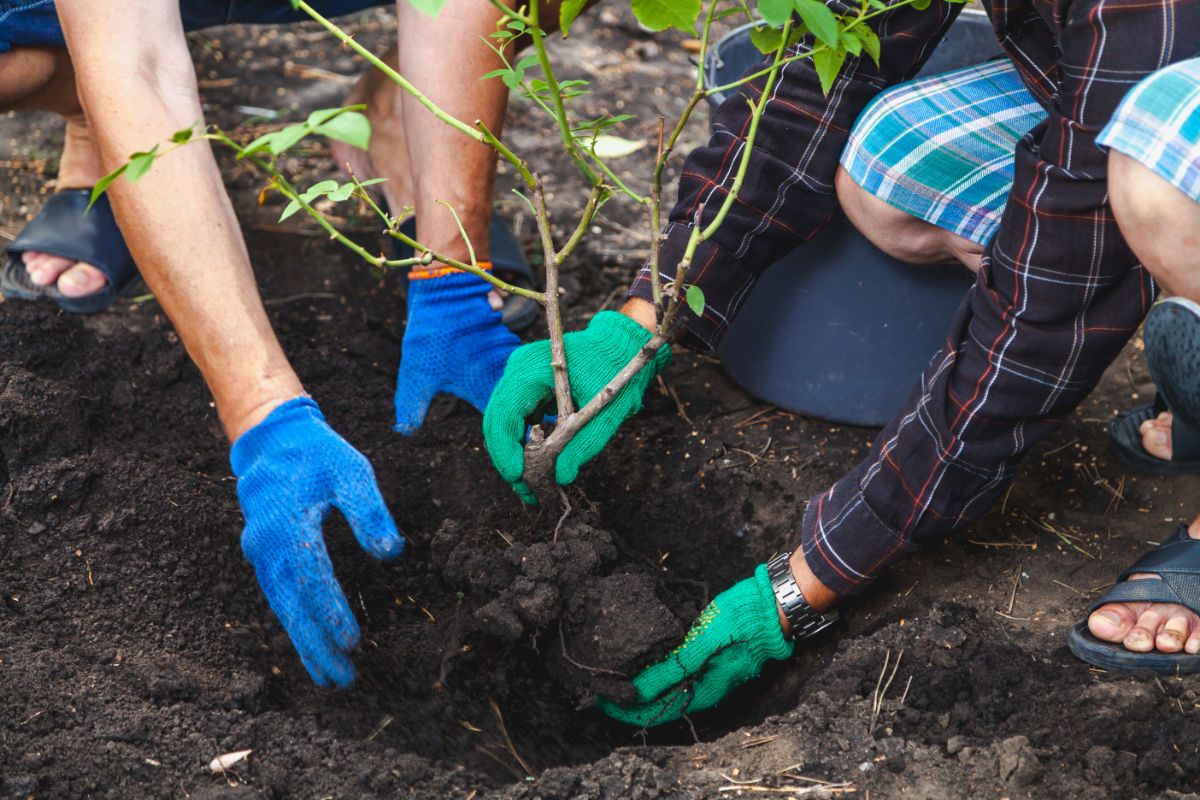
So let’s get back to the planting.
You have a big hole in the ground so the rose can stretch its roots out and be happy. We have good soil mixed with organic material.
Take a look at your rose and use your clippers to cut off any dead canes or leaves. If there are roots coming out of the holes at the bottom of the pot, cut them off as well.
Now we'll take the rose out of the pot.
Lay the pot on its side, with the rose hanging over the hole. Grip the rose by the neck and slide it out.
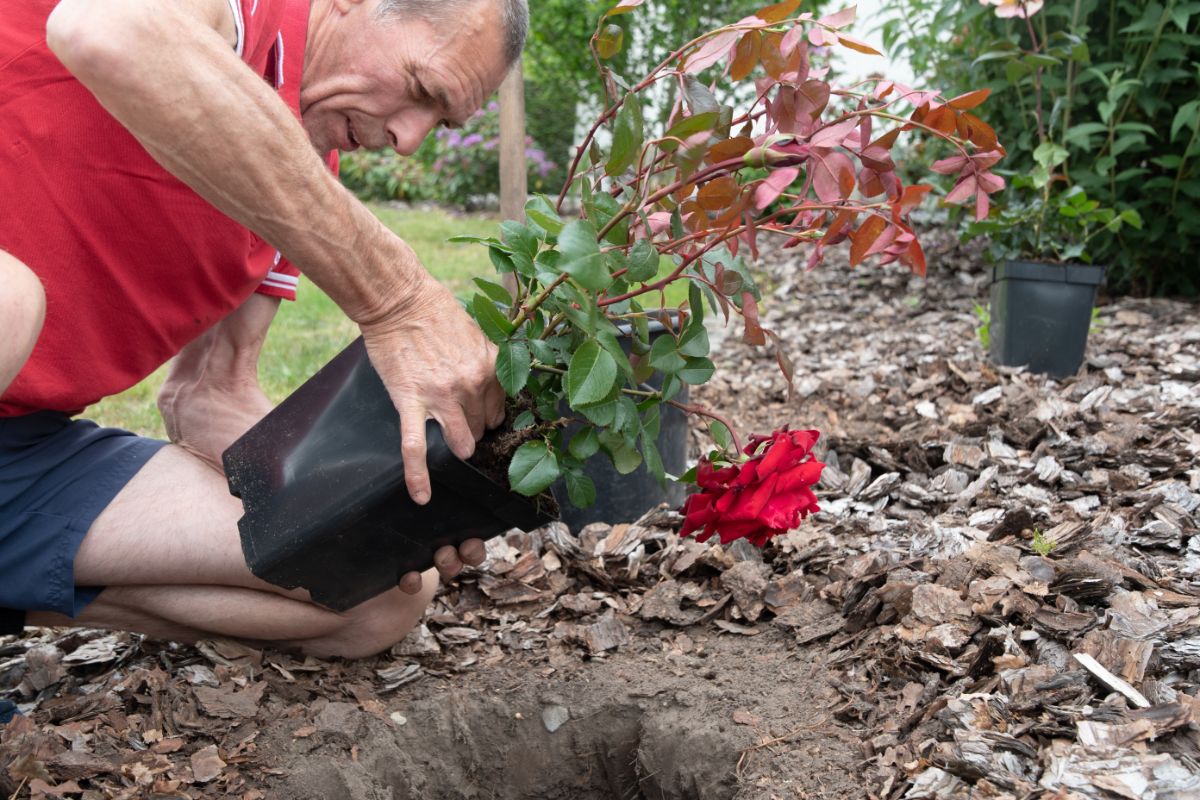
If the rose doesn’t come out, roll the pot, pressing down on it slightly to loosen the rootball, then try again until it’s out.
If the rootball is rootbound, cut through the roots that were curling around the bottom of the pot with your gardening knife or clippers.
Once that’s done, set the rose, nice as anything, into the hole. Green side up, of course.
A Trick with the Shovel
Here’s how to see if the rose is deep enough in the ground. Lay the shovel next to it so the handle is flush against the ground, going across the top of the hole. This shows you where the soil level is compared to the rose. Make sure the bud union is a little above the soil line. Easy peasy!
Take the rose out and scoop out a little more dirt until it’s sitting right where you want it.
Put in the Soil and Make a Saucer

Now you can put the soil back around the rose. Tamp it down lightly – don't tamp it down hard. You want to get the big air pockets out, but the soil should have spaces or pores in it. Roots need air in the soil, though not too much, so they don’t dry out. Water will also drain through these pores.
Once the rose is planted, you'll have dirt left over. Use it to build up a saucer around the rose. This captures the water and lets it soak slowly into the soil.
Then fill the saucer with mulch to protect the rose and its roots.
Water! Water!! Water!!!
Get the water hose and let it run into the saucer for a while, and let it soak in all around the rose. Water the rose deeply so it gets way down to the bottom of the hole and even past it.
This encourages the roots to go deep into the soil. Shallow watering makes the roots concentrate at the top of the soil, where they’re easily burned by the heat of the sun and the freezing cold of winter. Deep watering makes the roots go underground, where they’re protected.
You’re Done! Now to Maintain Your Fall-Planted Rose
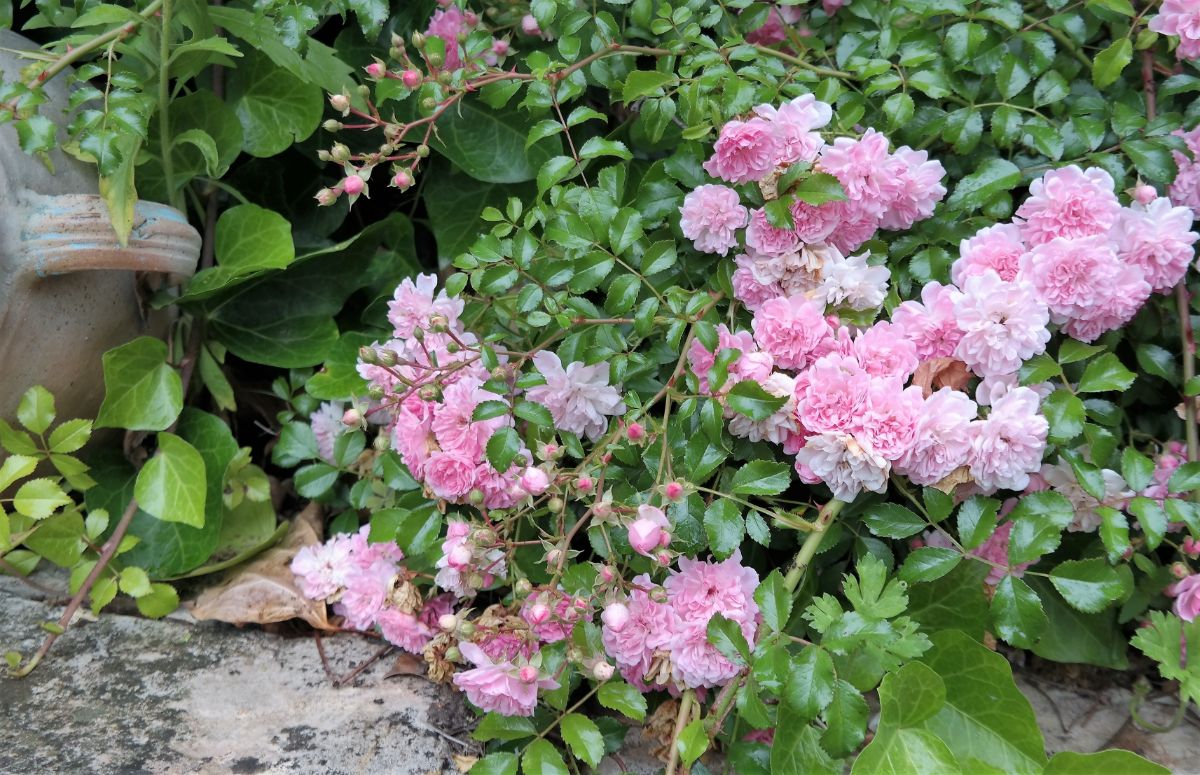
Now you can wash your hands and sit outside with a cold drink and look upon the fruits of your labor. There's just a little maintenance you should do.
The rose will need to be watered about once a week. Add a little more mulch after your first frost. Before the first hard freeze, pile up mulch over the canes to protect them from the freezing cold temperatures and the winds of winter that will dry out the ground and the canes.
Do these things to maintain your fall-planted rose and you’ll have a rose that’s all ready to go once spring rolls around.

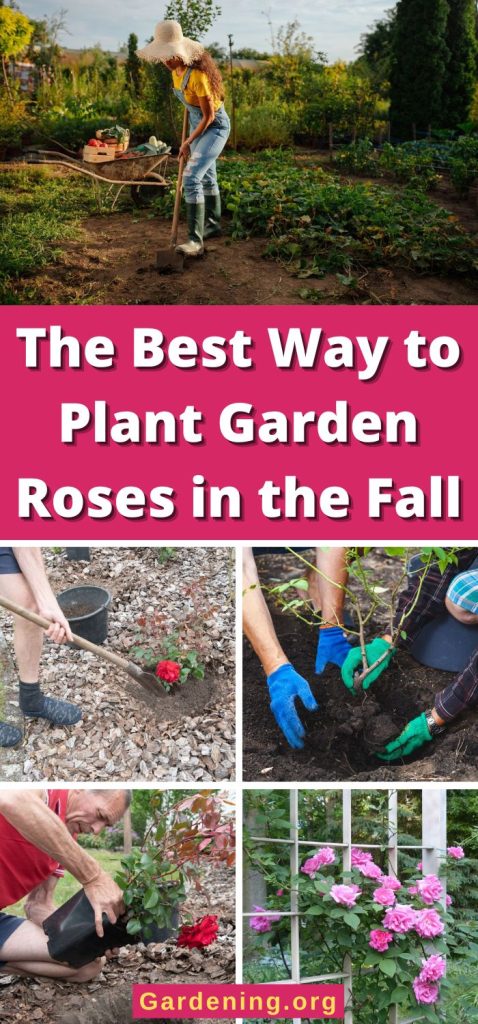

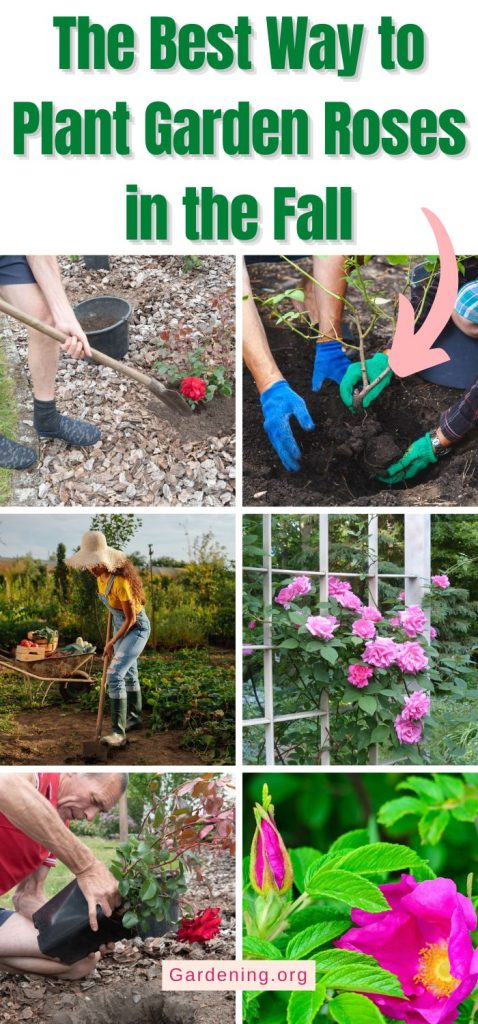
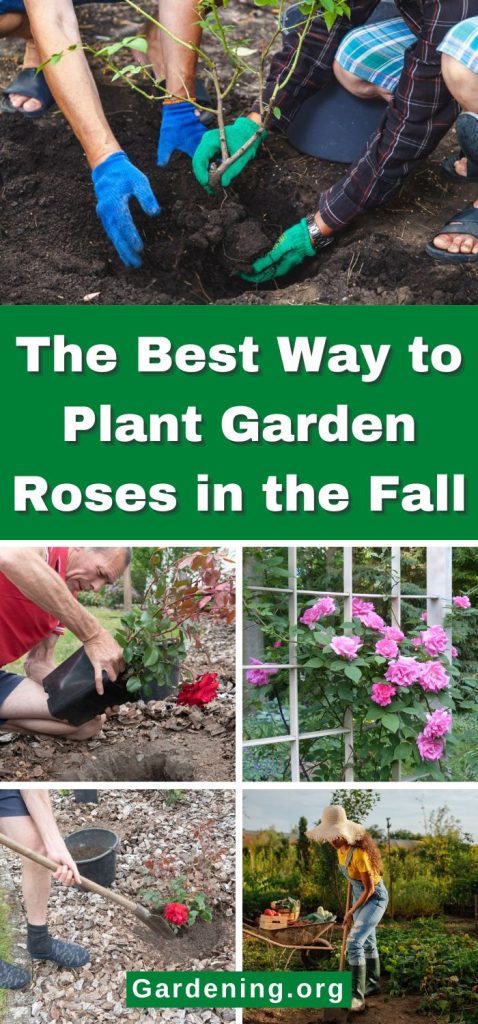
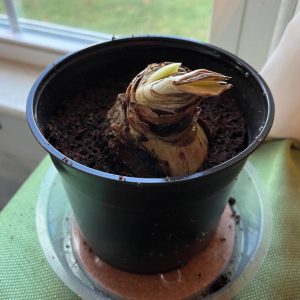



Leave a Reply